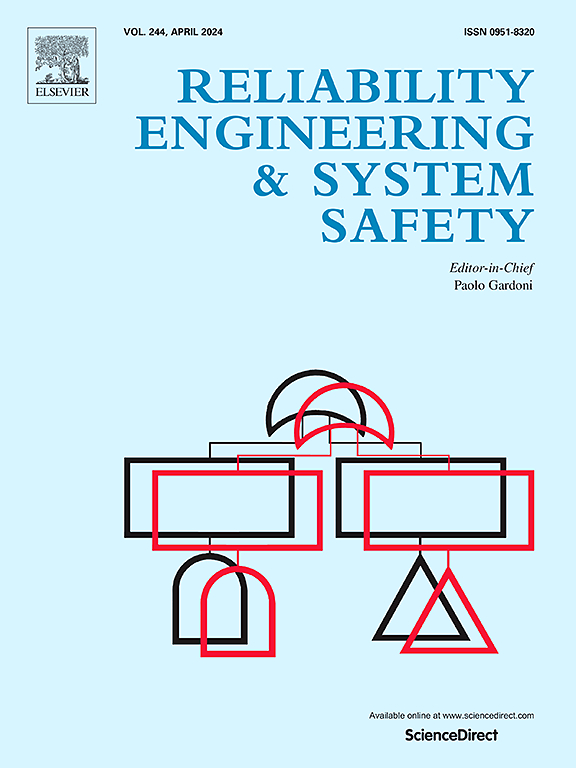Fault semantic knowledge transfer learning: Cross-domain compound fault diagnosis method under limited single fault samples
IF 9.4
1区 工程技术
Q1 ENGINEERING, INDUSTRIAL
引用次数: 0
Abstract
The coupling of faults leads to an exponential growth of compound fault types, making it impractical to collect complete labeled compound fault data in real-world scenarios. While cross-domain compound fault diagnosis (the target-domain does not have labeled compound fault data) is crucial for system reliability, existing methods often rely on abundant single-fault samples and rarely validate the reliability when single-fault data is limited. To overcome this limitation, we propose a novel fault semantic knowledge transfer learning framework. Specifically, FSKTL incorporates inter-class semantic distance loss in the source-domain, enabling fault classification through low-dimensional fault semantics and identifying the optimal fault semantic correlation function. Subsequently, FSKTL introduces inter-domain semantic alignment loss in the target-domain. This approach not only preserves the semantic space optimized by the source-domain for fault classification, but also achieves domain adaptation, enhancing the cross-domain generalization of the optimal fault semantic correlation function. Finally, extensive experiments are conducted on two publicly available datasets to validate the effectiveness of the proposed method. The results demonstrate that compared to other methods, this approach achieves the highest accuracy in cross-domain compound and single fault diagnosis.
故障语义知识迁移学习:有限单故障样本下的跨域复合故障诊断方法
故障的耦合导致复合故障类型呈指数增长,使得在现实场景中收集完整的标记复合故障数据变得不切实际。虽然跨域复合故障诊断(目标域没有标记的复合故障数据)对系统可靠性至关重要,但现有的方法往往依赖于丰富的单故障样本,很少在单故障数据有限的情况下验证可靠性。为了克服这一局限性,我们提出了一种新的错误语义知识迁移学习框架。具体而言,FSKTL在源域引入类间语义距离损失,实现了低维故障语义的故障分类,并识别出最优的故障语义相关函数。随后,FSKTL在目标域中引入了域间语义对齐损失。该方法既保留了源域优化后的语义空间用于故障分类,又实现了域自适应,增强了最优故障语义相关函数的跨域泛化能力。最后,在两个公开可用的数据集上进行了大量实验,以验证所提出方法的有效性。结果表明,与其他方法相比,该方法在跨域复合和单故障诊断中具有最高的准确率。
本文章由计算机程序翻译,如有差异,请以英文原文为准。
求助全文
约1分钟内获得全文
求助全文
来源期刊

Reliability Engineering & System Safety
管理科学-工程:工业
CiteScore
15.20
自引率
39.50%
发文量
621
审稿时长
67 days
期刊介绍:
Elsevier publishes Reliability Engineering & System Safety in association with the European Safety and Reliability Association and the Safety Engineering and Risk Analysis Division. The international journal is devoted to developing and applying methods to enhance the safety and reliability of complex technological systems, like nuclear power plants, chemical plants, hazardous waste facilities, space systems, offshore and maritime systems, transportation systems, constructed infrastructure, and manufacturing plants. The journal normally publishes only articles that involve the analysis of substantive problems related to the reliability of complex systems or present techniques and/or theoretical results that have a discernable relationship to the solution of such problems. An important aim is to balance academic material and practical applications.
 求助内容:
求助内容: 应助结果提醒方式:
应助结果提醒方式:


